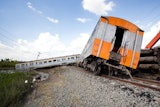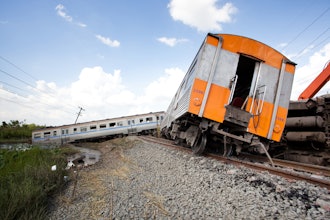In 2015, 57 percent of the reported workplace amputations occurred in the manufacturing industry, reports EHS Today. Amputations were partially the result of machine guarding, cites the news source, making guarding among OSHA’s top 10 citation list this year. Manufacturing companies with potential machine hazards are on the agency’s radar — and this aim doesn’t appear to be wavering any time soon.
For companies relying on spreadsheets, pen and paper — even standalone safety systems — there is risk in failing to properly communicate and educate other departments, particularly maintenance and production, when it comes to up-to-date safety trainings, compliance guidelines, instruction and procedural manuals, incident reports, certifications and other resources.
The Sting Of Noncompliance
What happens when a company faces an inspection but hasn’t kept up with its OSHA requirements? Potentially disastrous fines tend to follow bad inspections. Looking through recent OSHA cases shows what these can look like. Recently, a recycling company faced $318,000 in penalties for failure to get its facility in order. Gas storage tanks without railings and inadequate petroleum handling were among the charges. Perhaps most damning of all is that the violations were repeat ones. When plants fail to fix mistakes over time, OSHA makes sure to issue stiff penalties.
“The issuance of repeated citations is a clear indication that Columbia Recycling continues to ignore OSHA’s safety standards and lacks concern to protect workers at this facility,” OSHA Atlanta-West Office Director Christi Griffin stated. “Employers need to be proactive and should not wait for an OSHA inspection to assess and correct workplace safety hazards.”
Striving For Improvement
What about companies that are doing well, that have passed inspections and haven’t had any accidents recently? Even these organizations shouldn’t rest on their laurels. Occupational Health & Safety contributor Shawn Galloway recently noted that it’s no longer legal to measure a plant’s safety by its rate of injured workers, and that by looking beyond these numbers, companies can improve their safety performance in more in-depth ways. Even facilities where no one has been hurt can always find something to improve, and should do just that.
Organizations that have a better internal understanding of their own processes, that have the data to show them what’s leading to their results, will be better equipped to make actual safety excellence materialize. Galloway added that organizations should be somewhat restless in their mindset. No matter how well things are going, there should always be an effort to improve risk reduction efforts. Of course, poorly managed and communicated safety programs can’t achieve this level of progressive excellence.
An Enterprise Objective
Building towards a state of safety excellence company-wide can occur in many ways — an easy way, of course, is to leverage the Occupational Safety & Health solution tied into your CMMS. By managing safety and health programs within this single system of record, all departments can be granted specialized user rights to access materials, monitor reports, record incidents, and other activities as permitted. The powerful functionality of modern CMMS offers a number of built-in reports to keep tabs on expiring user certifications, as well as dashboard KPIs to track leading indicators that can help “teams forecast, with confidence, future outcomes,” which OH&S names as a pillar in working towards safety excellence.
A zero-injury standard isn’t the end-all of OSHA compliance and safety initiatives. By looking towards utilizing the latest CMMS and integrated OSH technology for enterprise access, it’s possible to shift cultural mindset to one of continuous improvement while making inspections less of an undue burden and more of a simplified path to achieve repeatable results.






















